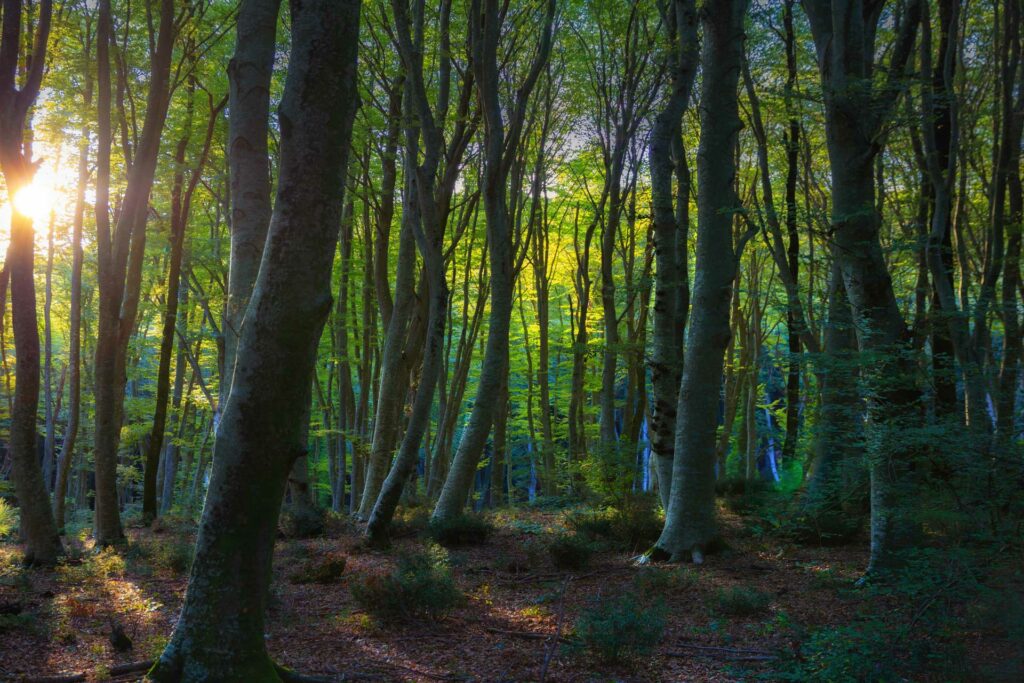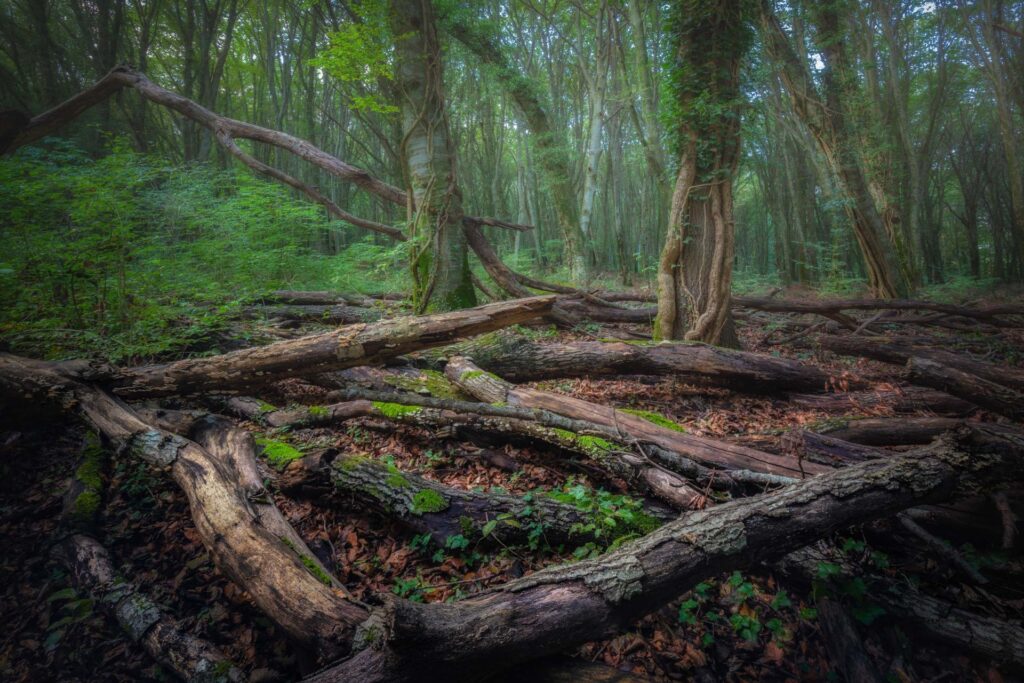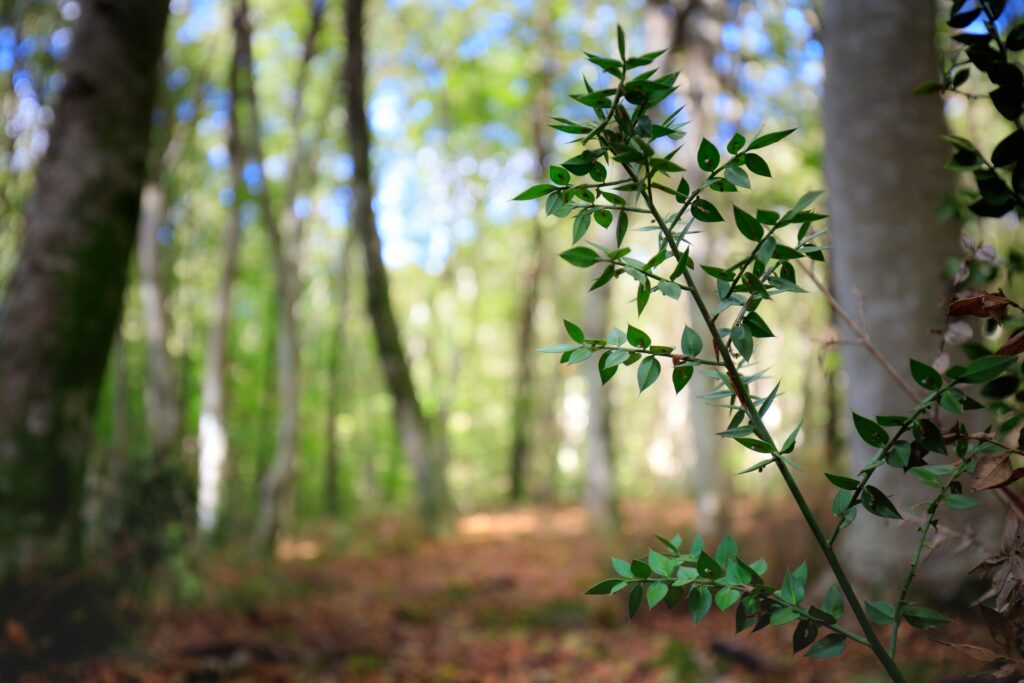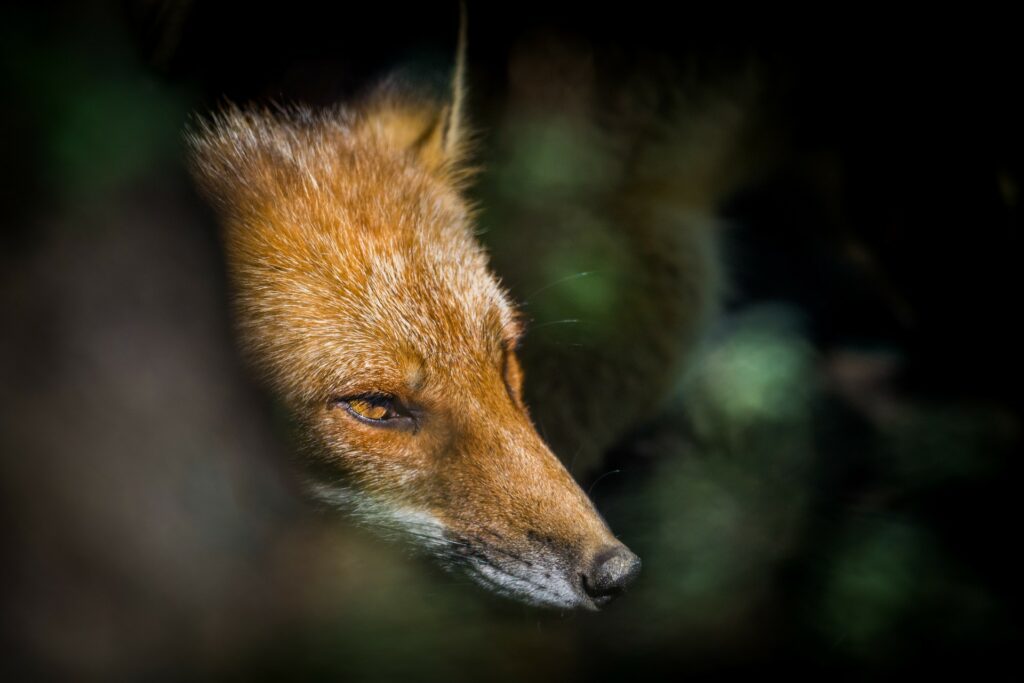Bracciano-Martignano Regional Park
The area
In Central Italy, the Beech Tree is a mountain forest species usually growing above 1,000 m of altitude. Yet, in the volcanic mountains of Lazio, thanks to the abundant rainfall and the favorable soil conditions, beech forests develop at lower altitudes – even at 350-400 m – with magnificent tall trees. Since these beech forests grow at a considerably lower altitude than usual, they are called “depressed” beech forests.
The most significant areas covered with beech forests are in Cimini Mountains (Monte Cimino, Monte Fogliano, and Monte Venere), in Tolfa Mountains (beech forest of Allumiere), and to a lesser degree in the area of Castelli Romani; in Bracciano-Martignano Park – which also includes Sabatini Mountains – the most important areas are represented by Monte Termine (590 m) and Monte Raschio (542 m) in the north-western section of the protected area, where a Special Conservation Area was established to safeguard them.
In the past, the characteristic thermophile beech forests were more widespread in the Park, as demonstrated by the big specimens that can still be found today on the cooler slopes of Monte Calvi and Monte Rocca Romana. Despite they never grow below 400 m, they can be found today at considerably lower altitudes than usual (700-1,300 m in the Alps and 1,000-1,300 m in the Apennines). They are wonderful examples of relict beech forest, witnessing the presence of ancient beech woodlands which, thousands of years ago, grew at much lower altitudes than today. In fact, during glaciations, the mountain vegetation zones moved towards lower altitudes because of the expansion of ice sheets; only after the retreat of ice sheets, the Beech Tree started to move again towards higher altitudes where we can currently find it, leaving sporadic beech forests at lower altitudes, where the climatic conditions were favorable.
Bracciano-Martignano Regional Natural Park is the youngest park in Lazio and well represents the typical volcanic landscape characterizing most of the hills in the north of Rome.
Astride the Provinces of Rome and Viterbo, it includes the two homonymous lakes – whose total size of 6,000 hectares represents about the 40 per cent of the Park area – and the adjoining countryside. Lake Bracciano is the largest, and represents a very important water reservoir for the city of Rome, which relies on it in case of emergency. The lakes occupy a basin originated from the activity of the ancient Sabatino volcano, which reached its climax about 400,000 years ago: a much deeper depression than what it seems, since Bracciano Lake reaches depths of 165 m.
The belt of hills surrounding the lake shores contributes to the Park’s variety: grazing lands and agricultural fields characterize the countryside, especially in some parts of the protected area, such as Vicarello estate. The forests on the hills mainly consist of Sweet Chestnut, probably spread by the Romans; however, it is also possible to find beech forests, like those in Oriolo and Monte Termine.
The forest
Monte Raschio is one of the most important places where you can discover the “depressed” beech forests of the Central Apennines and, specifically, of the volcanic mountains of Lazio. Located within Bracciano-Martignano Regional Natural Park, it is a small state forest property of about 150 hectares handed over by the former State Forest Property Agency to Regione Lazio in the late 1970s.
The beech forest covers about 80 hectares, and since 2017 it represents the core of the UNESCO site. Another area of about 20 hectares is covered with conifer reforestation sites, and the remaining area – a buffer zone of about 55 hectares – consists of woodlands formed by other deciduous broad-leaved trees, mainly Turkey oaks.
Despite the State Forest Property Agency interrupted the beech forest exploitation in the 1950s, traces of logging activities from the past can still be found in the charcoal kilns: they are small and flat circular areas where it is still possible to find charcoal under the leaves.
With the establishment of Bracciano-Martignano Park in 1999, the state forest property of Monte Raschio becomes part of the protected area. Since the beginning, the Park Authority has been working to secure the reforestation sites from forest fires, also to protect beech forests.
Currently, the beech forests mainly consist of high-density high forest stands. The traditional activities carried out for economic purposes stopped several decades ago, and only the wood coming from dead plants can be collected by the local community for fuel or repairs. This caused a considerable increase in the density of the stands forming the forest, a process that has been accelerated by the high soil fertility.
From a biogeographical point of view, Monte Raschio is one of the rare residual sites of European Beech at low altitudes in a Mediterranean environment, witnessing the migration of the species in order to adapt to climate change, an ongoing process which started thousands of years ago. This old-growth beech forest of imposing trees with a diameter of over one meter and a height of 30 m develops between 400 and 550 m, extraordinarily low altitudes if compared to the other beech forests of the Apennines.
Its presence is made possible by the local communities, who have decided to preserve something that has always been part of their lives, as well as by a virtuous biogeochemical cycle among the Beech Tree, the fertile volcanic soils, and the humidity coming from the nearby Lake Bracciano and the Tyrrhenian Sea. In fact, the particular architecture of its tree crown and its smooth bark allow the Beech Tree to “capture” also the atmospheric humidity – the moisture in the air – which runs along the trunk, from the leaves and the branches to the root collar and the roots. This process, together with other local phenomena, enables the Beech Tree to overcome the most serious ecological limiting factors in the Mediterranean area, that is drought and the intense summer insolation which would not allow it to survive.
The biodiversity
The volcanic lakes characterize the Park territory, making it unique both from an environmental and historical point of view, and guarantee the presence of beech trees thanks to their impact on the local climate. The particular morphology of the lakes (great depth, if compared to their size area) is closely related to their origin: they are the result of the Quaternary volcanism which interested almost all the Italian peninsula. The geological features must be associated with the vegetation features, for these environments are significant reservoirs of biodiversity. The great variety of the environments – from wetlands to woodlands, from grazing lands to agricultural fields – goes hand in hand with a rich fauna, differentiated according to the habitats and, in the case of migratory birds, also according to the seasons.
The beech forest of Monte Raschio is an integral part of this complex and varied landscape where the different habitats are closely related one to the other for the complex relationships among their inhabitants. In particular, the flora and the composition of the forest should be interpreted as “primary” features, that is as relictual features dating from very ancient times. Therefore, these beech forests should be considered as primary formations, different from the other old-growth beech forests located at higher altitudes, and of much greater value than pure beech forests.
In detail, this beech forest is characterized by an upper tree layer mainly consisting of Beech Tree in association with Turkey Oak and Sweet Chestnut trees, isolated or in small stands, more widespread in the transition areas close to the Turkey oak woodland. Besides the Beech Tree, in the lower tree layer there are the Manna Ash, the Sycamore Maple, the Field Maple, the Holly, the Wild Service Tree, the True Service Tree, some specimens of Wych Elm and Spanish Oak. Because of the thick canopy, the shrub and herbaceous layers are not very developed. The shrub layer mainly includes the Holly, the Hawthorn and the Butcher’s Broom, as well as a more or less prominent beech tree regeneration. The Common Dogwood, the Cornelian Cherry, the Hazel, the Privet, the Elder, and the Elm-leaf Blackberry are less frequent and more localized. The herbaceous layer is characterized by nemoral species such as Allium pendulinum (known as Italian Garlic), the Sanicle, the Dog’s Mercury, the Spurge-laurel, the Apennine Anemone, the orchids Neottia nidus-avis (Bird’s-nest Orchid), Cephalanthera longifolia (Narrow-leaved Helleborine), Dactylorhiza maculata (Heath Spotted Orchid), and the protected species Cardamine chelidonia. In the most important thalwegs, there are small stands of Common Hornbeam and Hazel.
After many years, some specimens of two important protected species have been recently observed on Monte Raschio: the wonderful beetle Rosalia alpina (Rosalia Longicorn), and the Wolf. While for the wolf we refer to the rich scientific literature on this important Italian carnivore, for Rosalia alpina we would like to highlight that it is a species protected by the European Union and included in Annex II of the Habitats Directive (Directive 92/43/EEC) as a “priority” species whose safeguard requires the creation of Special Conservation Areas, and in Annex IV as a species requiring a “strict protection regime”. An indicator species of the good health of the forest environments, Rosalia alpina is fully entitled to be considered a symbol of UNESCO beech forests for its beauty and ecological importance.
Getting here
Bracciano-Martignano Regional Natural Park and the beech forest of Monte Raschio are accessible by car: from Rome, take the highway or road SS 2 Cassia and road SS 1 Aurelia; from Viterbo, take road SS 2 Cassia. They are also accessible by train: from Rome, FM3 railway stations of Roma Ostiense, Trastevere, S. Pietro, Balduina, Monte Mario, Ottavia, La Storta to Cesano, Anguillara, Bracciano, Manziana, and Oriolo, according to your destination, every 30 minutes or every hour; from Viterbo, FM3 railway station of Viterbo Porta Fiorentina to Oriolo, Manziana, Bracciano, Anguillara, according to your destination, every hour.
The area is also accessible by bus: from Rome, from the bus terminus of Lepanto (Metro A) and Saxa Rubra (Via Flaminia) to your destinations; from Viterbo, from the bus terminus of Viterbo to Blera and then by bus to Barbarano, Oriolo, etc., to your destinations.
By plane, the nearest airports are Rome-Fiumicino and Rome-Ciampino.
For information:
Bus service from Rome and Viterbo: https://www.cotralspa.it
The trails
It is possible to visit the old-growth beech forest of Monte Raschio by following the hiking trail starting in Oriolo Romano, also from the railway station. Another possibility is represented by “Ciclovia dei boschi” (The Forest Bike Trail), one of the two “Ciclovie Sabatine” leading across the park forests, including the UNESCO World Heritage forest of Monte Raschio.
1. On foot on Monte Raschio
Loop trail in the UNESCO beech forest of Monte Raschio
- Distance: 8 km
- Elevation: 250 m
- Estimated hiking time: 3 hours
- Difficulty level: moderate
This trail is entirely surrounded by the wonderful forest of Monte Raschio, the beech forest that has been inscribed on UNESCO World Heritage List. The trailhead is represented by the village of Oriolo Romano and gives the opportunity to reach the UNESCO site by following a dirt road with an elevation of about 200 m. The loop trail leads back to the trailhead, downhill.
Things to do
The Park offers several trails and routes. The site of Monte Raschio can be easily visited by taking the nature loop trail starting in Oriolo Romano – also from the railway station – and surrounded by the fascinating UNESCO World Heritage forest.
There are also two theme trails called “Ciclovie Sabatine”, that is trails you can follow by bike, horseback riding, or on foot. They are adequately marked with signs or markings and provided with interpretive panels describing the main environmental and landscape features of the area.
The visit to the beech forests goes hand in hand with the visit to Lake Bracciano: they are inseparable. This is confirmed by an anecdote of forest archaeology on the lake (lacus) of Rome, which became an artificial lake (stagnum) in Nero’s Domus Aurea in 64 AD, to disappear with the building of the Flavian Amphitheater or Colosseum in 72 AD: this resulted in the disappearance of the beech trees of Colle Fagutale (fagus = beech), home to a temple dedicated to Jupiter. The hill is an extension of Colle Esquilino, next to Colle Oppio (oppio = maple), overlooking the lake. All toponyms containing “faeta/e/o” and “fate” refer to the current or historical presence of the Beech Tree.
If you want to visit the protected area, you can contact the following Tourist Information Centers (or PITs): the PIT in Anguillara Sabazia, the PIT in Bracciano, and the PIT in Trevignano Romano. Moreover, there are several museums, including the City Museum in Bracciano, the Botanic Park San Liberato (Bracciano), the Historical Museum of Farming and Popular Culture “Augusto Montori” (Anguillara S.), the Neolithic Exhibit Center (Anguillara S.), and the City Archaeological Museum (Trevignano R.), as well as many other places which can complete your visit to the beech forest of Monte Raschio and help you to discover this extraordinary area.





























